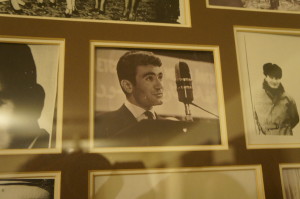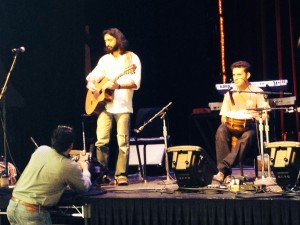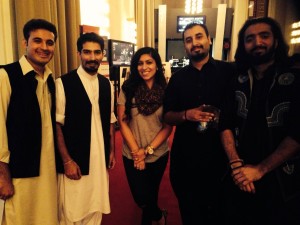by Niala Mohammad
“Wagma!!!! I love your programs; we look forward to it every week”! Sobia Khan from Hangu screeched with excitement when her call was forwarded to VOA Deewa’s weekly women’s show -“Da Mirmano Ghag” which means the women’s voice.Many girls like Sobia flood the phone lines with their questions and comments for Wagma Jalawan’s show. Some of show’s regular callers use interesting pseudo names from Bollywood movies and Pakistani Dramas like “Arthi Intizar” and “Ashwariya Rai”. Others call the program using their father, husband, or brothers mobile phones. One of Wagma’s frequent callers hides in the closet and calls the show secretly in a muffled voice-“Hello, please put me forward to the program before my call gets cut off…I have a question.”
Da Mirmano Ghag airs on VOA Deewa radio every Thursday (at 9:00 p.m. Pakistan standard time and 8:30 p.m. in Afghanistan). The show is solely dedicated to women and men are discouraged from calling during this hour. The audience is the Pashto speaking women of Pakistan and Afghanistan’s border region. They make up more than half the population in the region yet their voices are often muffled, perhaps this is why they are so eager to participate during this weekly program.
The show’s main goal is to create awareness and to allow women from the region to speak their mind with ease and comfort. For this reason the show’s host, Wagma Jalawan and producer, Niala Mohammad are women.
The Women’s Voice covers a large array of issues like polio, education, sectarian violence, domestic abuse, entrepreneurship, politics, current events, beauty, and fashion as well as taboo issues like HIV/AIDS, child marriages and sexual harassment. The show brings in experts and guests that provide women with knowledge and encouragement. The goal is to introduce tribal women to women professionals, civil rights activists, sportswomen and politicians. For example Nazia Parveen, the first female athlete from Pakistan who hails from Bajaur Agency and Dr. Hashmat a homeopathic doctor/nutritionist who offers household alternative health remedies. The guests are not always women, but men who reinforce the rights and importance of women in Pashtun society like Dr. Qibla Ayaz, an Islamic scholar that refutes common rhetoric used by extremists in the region where these women reside. And Dr. Ifthikar Hussain, a senior Psychiatrist who helps women overcome and understand stigmas that society has placed on them.
The women that listen to this program are the most affected by extremism and terrorism yet there is not enough coverage for women in the media. In most Pakistani entertainment programming women are depicted as traditional housewives, girls are shown as damsels in distress awaiting their prince charming. It is difficult for women to envision themselves in a role outside of the household.
Mehreen, a lady health worker assigned to the polio campaign in Tal called the program and told the host “Women were aware of facts on polio and what they need to do to prevent the spread of the disease. The information you provide in your programs has made life easier. The women actually listen and take your advice seriously not just on polio but everything you discuss-health, politics…They take the information and encouragement you give them to heart.”
The host, Wagma Jalawan said, “I try my best to encourage women to see a doctor in regards to their health concerns but I take into consideration many of them do not have access to proper health care facilities or cannot afford the care. So often times we bring in specialists that can provide them with home remedies for their issues and concerns.”
The fact that so many women like Sobia Khan from Kohat participate in this show is merely a glimpse of the success attained by this programming. The fact that women from remote areas of Pakistan and Afghanistan; North Waziristan, Kurram Agency, Hangu, Kohat, Upper Dir, Swat, Pashin, Khost, Helmand etc. call to participate in the program is proof enough that the other half of the population is slowly making themselves heard.
VOA Deewa radio also has a daily women’s breakfast show called Bibi Shereen that airs 7 a.m. to 8 a.m. in Pakistan and 6:30 a.m. to 7:30 a.m. in Afghanistan. This segment will be shifting to a radio on TV, so dish owners in the region will be able to see the program on Asia Satellite 3.
Da Mirmano Ghag Official Facebook Page:
https://www.facebook.com/pages/Da-Mirmano-Ghag/275327079305975





























